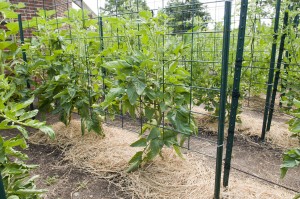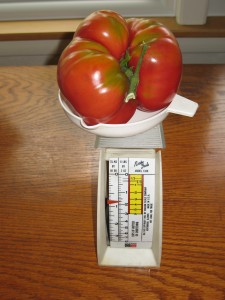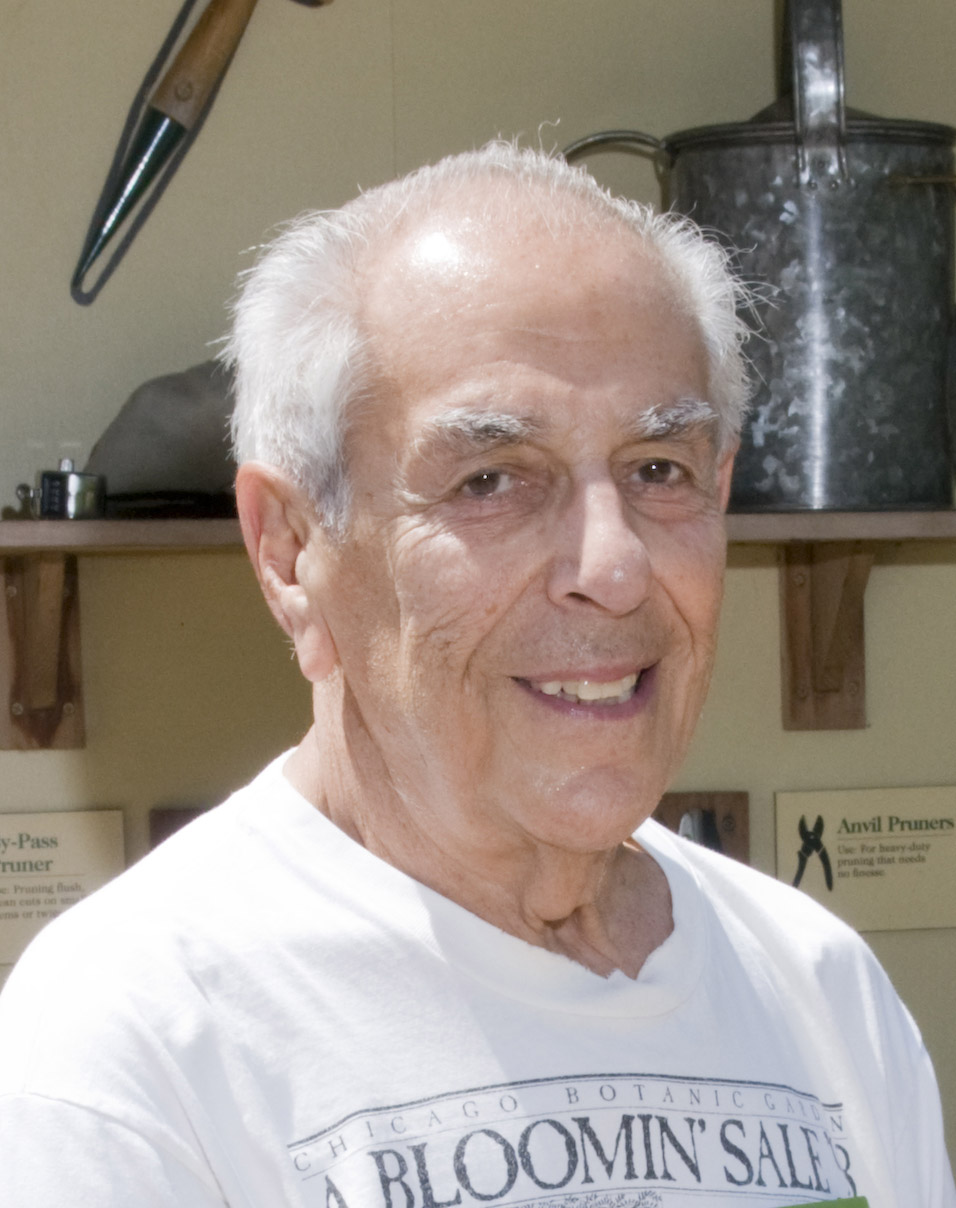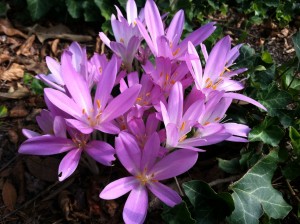Our volunteers are awesome. We recently sat down with 16-year volunteer (and 2008 Volunteer of the Year) Sam Darin, pictured above, is famous for both his tool-sharpening skills (stop by for summer tool talk in the Fruit & Vegetable Garden on Thursdays, May through October) and his tomato-growing expertise.

We asked a timely question: How does a Master Gardener (Sam was Illinois’ Master Gardener of the Year in 2010) put a vegetable garden to bed for the winter? His approach is so straightforward that even first-year gardeners can follow his lead:
1. After removing spent vegetables plants, pick up all leaves and fruit from the beds, clearing them of debris that might harbor diseases or pests.
2. AFTER the first hard frost, add a 4-6” layer of chopped leaf mulch to cover the beds for the winter. (Rake dry fall leaves and store them in a garbage can; use a mower or weed whacker to chop them.)

3. Beyond the bed, continue to water shrubs and trees until frost. Late fall is usually quite dry, so it’s helpful to give larger plants a good drink before winter sets in.
As Sam says, “That’s about it.” Thanks, Sam, and see you at the Garden next spring!




 A city with the motto “Urbs in Horto” (Latin for “City in a Garden”) deserves a signature fragrance: Tru Blooms Chicago debuts this fall as our fair city’s first-ever fine perfume. Today, the Chicago Botanic Garden held a preview of the fragrance and we personally enjoyed the lovely floral scent. Here’s why it’s a standout: it’s made with flowers grown in urban gardens throughout the Chicago area.
A city with the motto “Urbs in Horto” (Latin for “City in a Garden”) deserves a signature fragrance: Tru Blooms Chicago debuts this fall as our fair city’s first-ever fine perfume. Today, the Chicago Botanic Garden held a preview of the fragrance and we personally enjoyed the lovely floral scent. Here’s why it’s a standout: it’s made with flowers grown in urban gardens throughout the Chicago area.